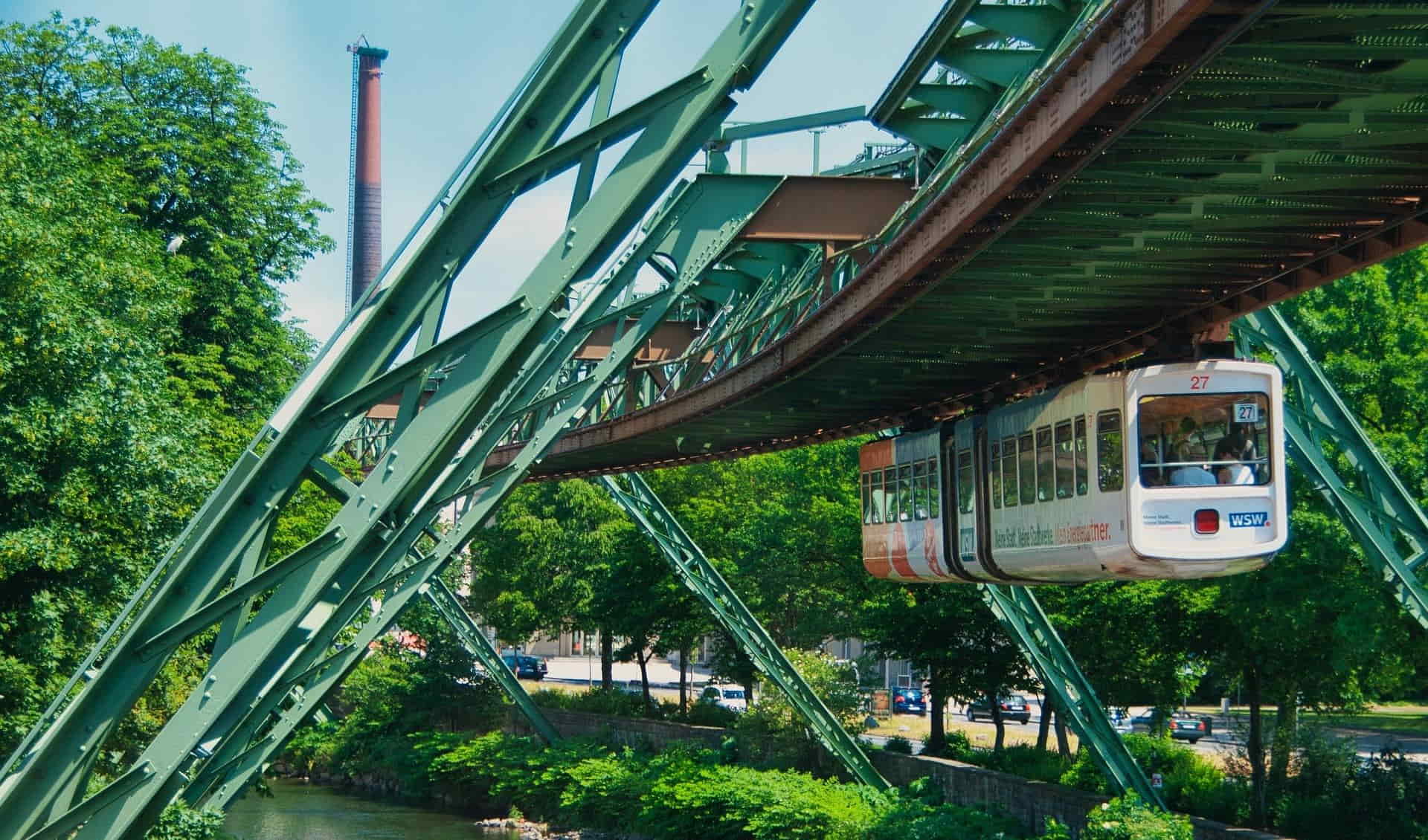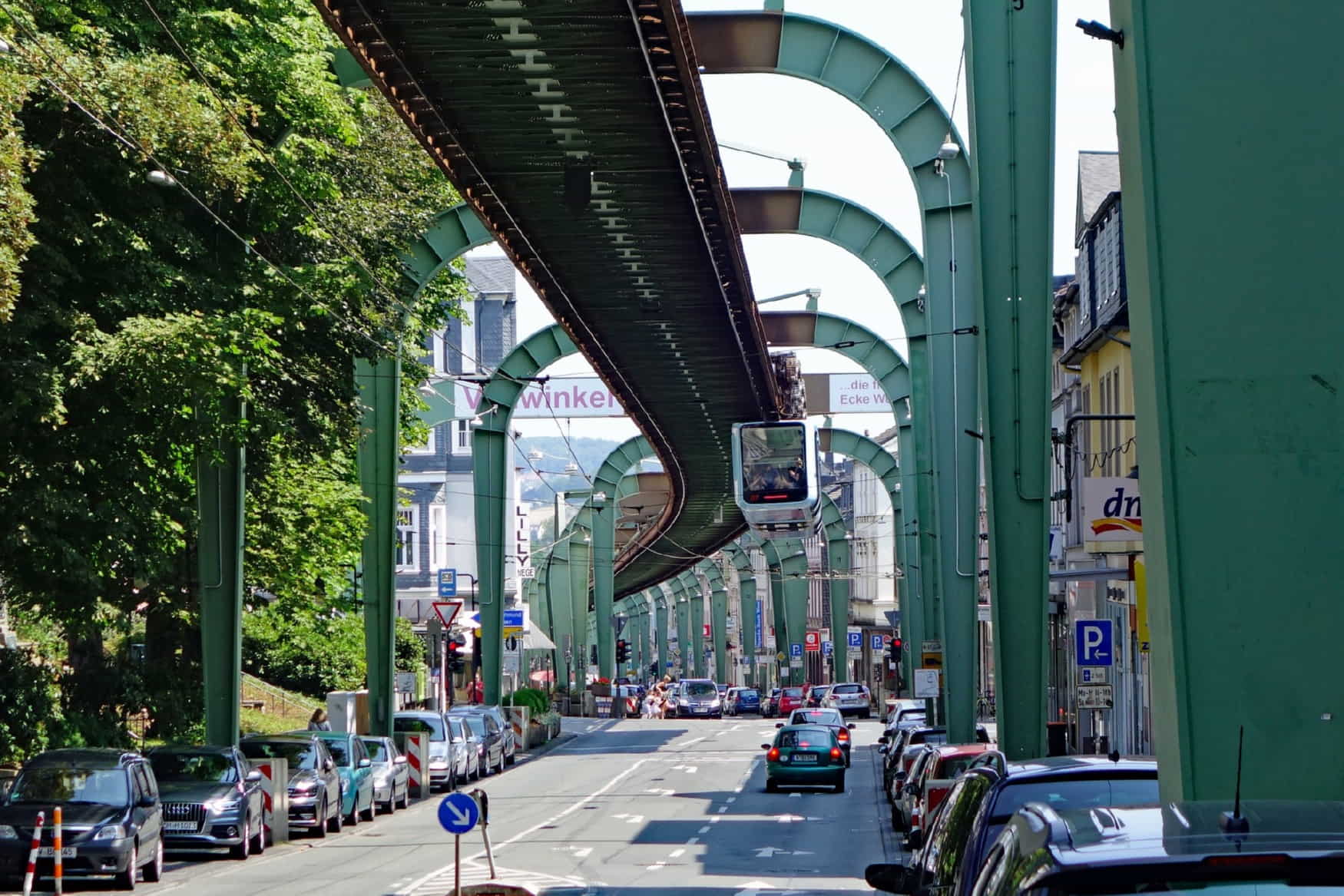The Wuppertal Suspension Railway, known locally as the Wuppertaler Schwebebahn, is a marvel of 19th-century engineering that continues to captivate visitors and serve commuters in the 21st century. Inaugurated in 1901, this unique suspended monorail system glides above the Wupper River, offering a transportation experience unlike any other in the world. As a functional public transit system and a beloved tourist attraction, the Schwebebahn has become synonymous with Wuppertal's identity.
Its elegant design and historical significance make it a must-see for engineering enthusiasts, history buffs, and curious travelers. The railway's ability to seamlessly blend innovative technology with everyday utility has ensured its place as an enduring symbol of German ingenuity.
Highlights
- The world's oldest electric elevated railway with hanging cars
- Travels 13.3 km through Wuppertal, mainly above the Wupper River
- Carries approximately 80,000 passengers daily
Contents
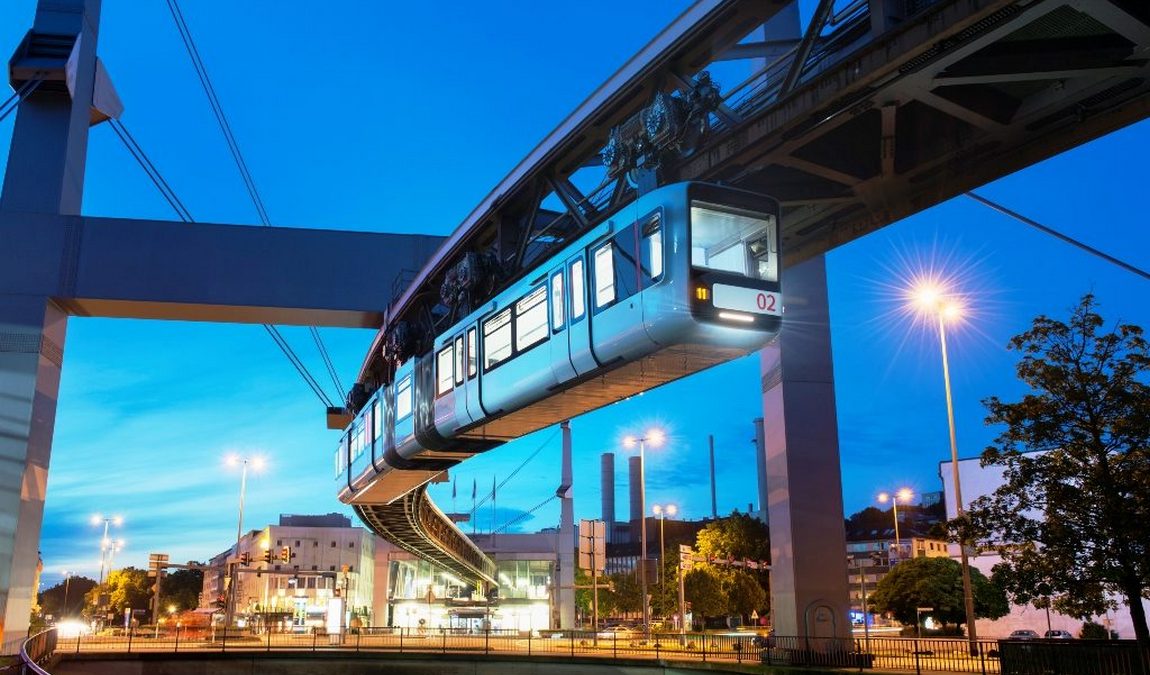 Photo: urban-transport-magazine.com
Photo: urban-transport-magazine.com
Here is Why Your Kids Will Find it Interesting
Children aged 5-12 will be particularly fascinated by the Wuppertal Suspension Railway's unique design. The sight of trains "floating" above the river and city streets will surely spark their imagination and curiosity about how things work. Wuppertal Suspension Railway is worth visiting with kids because it offers an exciting ride that feels like a real-life adventure. The large windows provide excellent views, allowing young passengers to spot landmarks and wave to people below, turning a simple journey into an engaging city exploration.
Family-friendly features
- Safe and exciting ride suitable for all ages
- Large windows for panoramic views
- Historical Kaiserwagen available for special tours
The Origins and Development
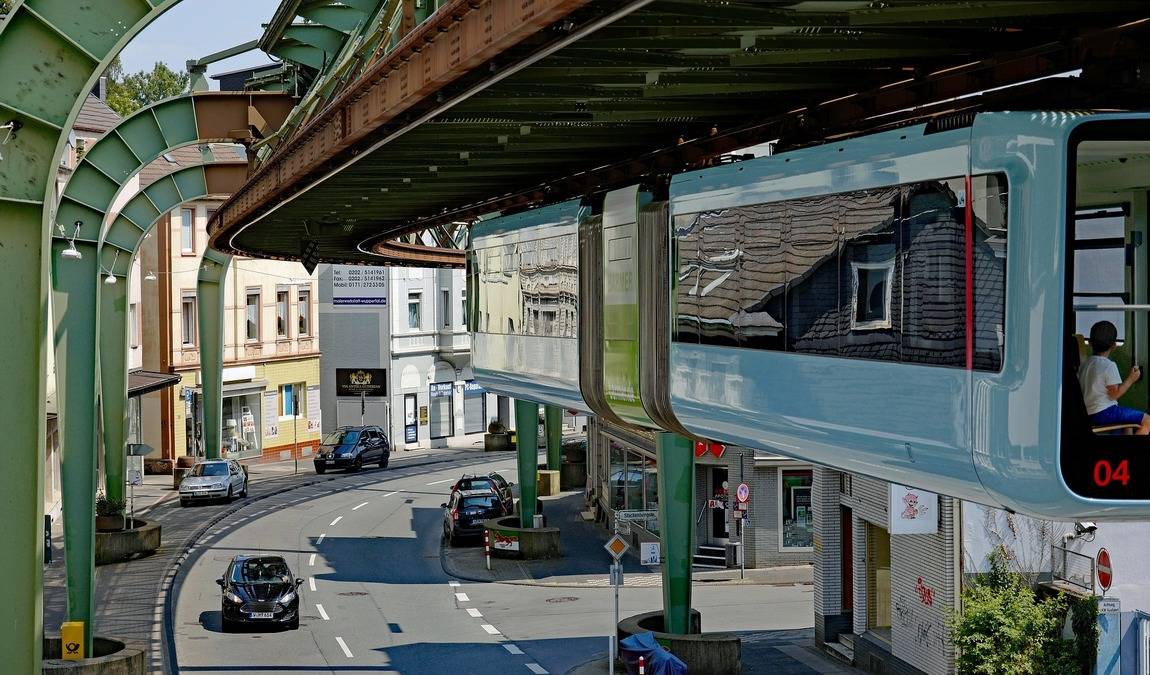 Photo: pixabay.com
Photo: pixabay.com
The Wuppertal Suspension Railway was Eugen Langen's brainchild. Langen first experimented with suspended rail systems as an innovative engineer at his sugar factory in Cologne. Recognizing the potential for urban transportation, Langen adapted his design for public use. Construction began in 1898, and the railway was inaugurated on March 1, 1901.
Emperor Wilhelm II played a significant role in the railway's early history. He and his wife, Auguste Viktoria, took a pre-inaugural trip on the line in 1900, riding in a specially designed carriage now known as the Kaiserwagen. This imperial endorsement helped cement the Schwebebahn's status as a prestigious and forward-thinking project.
The railway's development was driven by the need for efficient transportation in the rapidly growing industrial cities of Barmen, Elberfeld, and Vohwinkel (now part of Wuppertal). The suspended design was chosen to overcome the challenges posed by the narrow, winding Wupper valley and the already densely built-up urban areas.
At 2,5 km is the Botanical Garden, which we recommend to visit with children.
Technical Marvels of the Schwebebahn
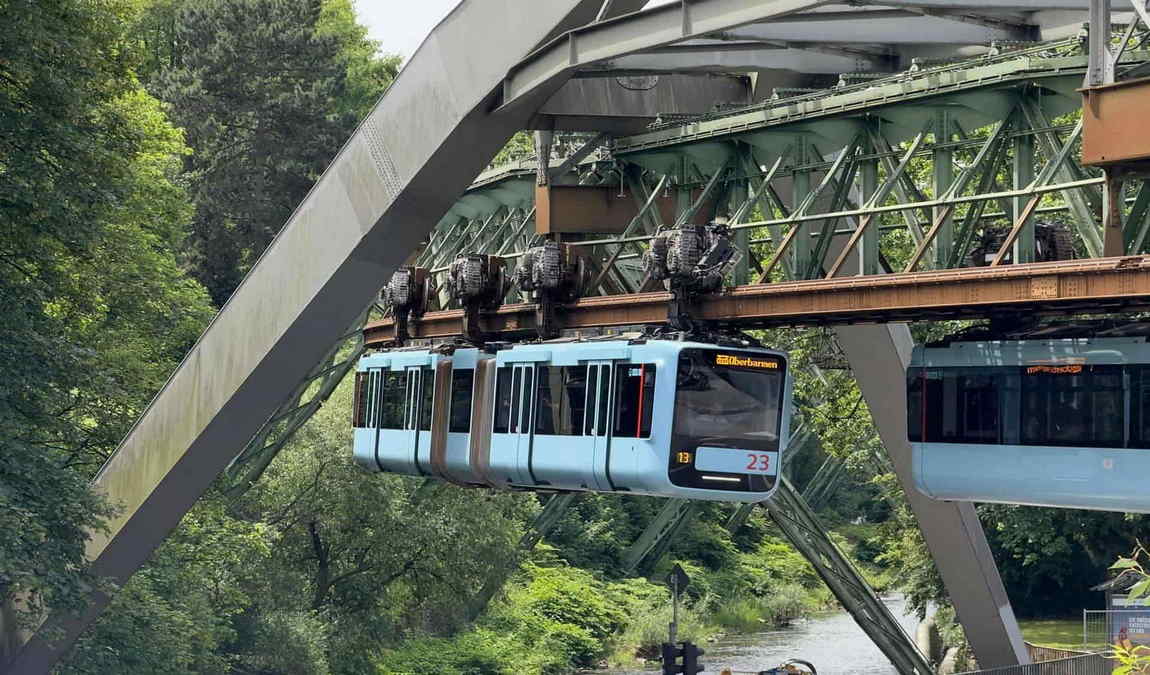 Photo: facebook.com/WuppertalunddieSchwebebahn
Photo: facebook.com/WuppertalunddieSchwebebahn
The Wuppertal Suspension Railway's most distinctive feature is its suspended design. Trains hang from a single rail supported by an elevated steel framework, allowing them to sway gently as they travel. This unique configuration enables the railway to quickly navigate tight curves and varying elevations.
Critical technical specifications include:
- Total route length: 13.3 km (8.3 miles)
- Elevation: Up to 12 meters above ground
- Maximum speed: 60 km/h (37 mph)
- Average speed: 25.6 km/h (15.9 mph)
- Number of stations: 20
- Daily ridership: Approximately 82,000 passengers
The railway's suspended nature allows it to take curves with radii as tight as 120 meters, making it significantly more maneuverable than traditional ground-based rail systems. This flexibility was crucial in adapting the line to Wuppertal's challenging topography.
The Schwebebahn Experience
 Photo: pixabay.com
Photo: pixabay.com
Riding the Wuppertal Suspension Railway offers a unique perspective on the city. For much of its route, the train glides above the Wupper River, providing passengers with unobstructed views of the water below and the cityscape. This elevated journey offers a constantly changing panorama of urban life, from historic buildings to modern developments.
The experience is enhanced by the railway's gentle swaying motion, adding excitement to the ride without compromising comfort or safety. Large windows in the carriages ensure that passengers can fully appreciate the views throughout their journey.
Modern trains on the Schwebebahn are equipped with various amenities to enhance passenger comfort: cushioned seating, air conditioning, and dehumidification systems, LED lighting, passenger information displays, and improved accessibility features for disabled passengers.
These modern conveniences blend seamlessly with the railway's historic charm, creating a unique fusion of past and present.
Modernization and Current Operations
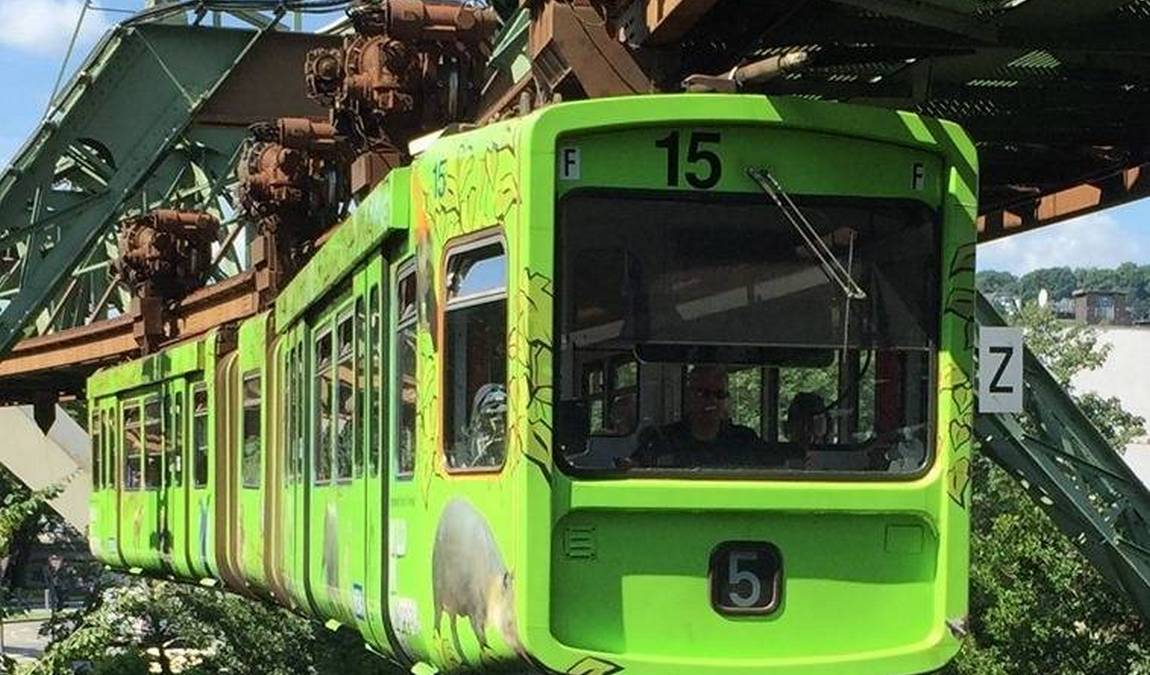 Photo: facebook.com/WuppertalunddieSchwebebahn
Photo: facebook.com/WuppertalunddieSchwebebahn
The Wuppertal Suspension Railway has undergone significant modernization to keep pace with technological advancements and changing passenger needs. In 2015, WSW (Wuppertaler Stadtwerke) introduced a new fleet of Generation 15 trains to replace the aging GTW 72 stock.
These new trains feature:
- Light blue livery
- Induction motors with energy recovery during braking
- Advanced passenger information systems
- Improved disabled access
- Increased energy efficiency
The system's power supply was upgraded from 600V to 750V DC to support the new trains and improve overall performance.
Currently, the Schwebebahn operates with high frequency, especially during peak hours. Trains run every 2-3 minutes during busy periods, ensuring efficient transportation for Wuppertal's residents and visitors. The railway's reliability and convenience have made it an integral part of the city's public transport network, carrying millions of passengers annually.
Best Time to Visit
 Photo: pixabay.com
Photo: pixabay.com
The Wuppertal Suspension Railway operates year-round, but the best time to visit with children is during weekends or school holidays when it's less crowded with commuters. Early afternoon rides offer good lighting for sightseeing. Weekday mornings and evenings should be avoided due to rush hour congestion.
Recommended Duration: A round trip on the entire line takes about an hour, providing ample time to enjoy the experience.
Our Resume
The Wuppertal Suspension Railway uniquely blends historical significance and modern functionality. Its innovative design continues to inspire and amaze visitors of all ages while efficiently serving the transportation needs of Wuppertal's residents. As both an engineering marvel and a cultural icon, the Schwebebahn is a testament to human ingenuity and the enduring appeal of novel transportation solutions.


